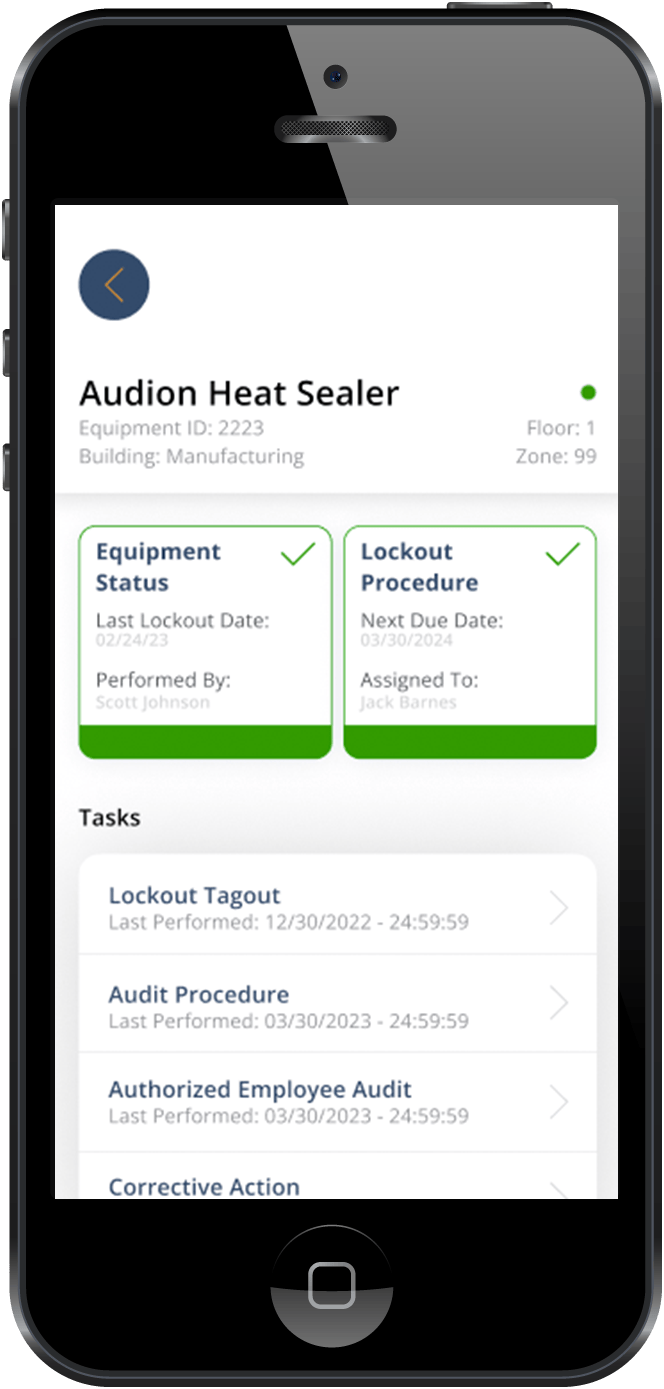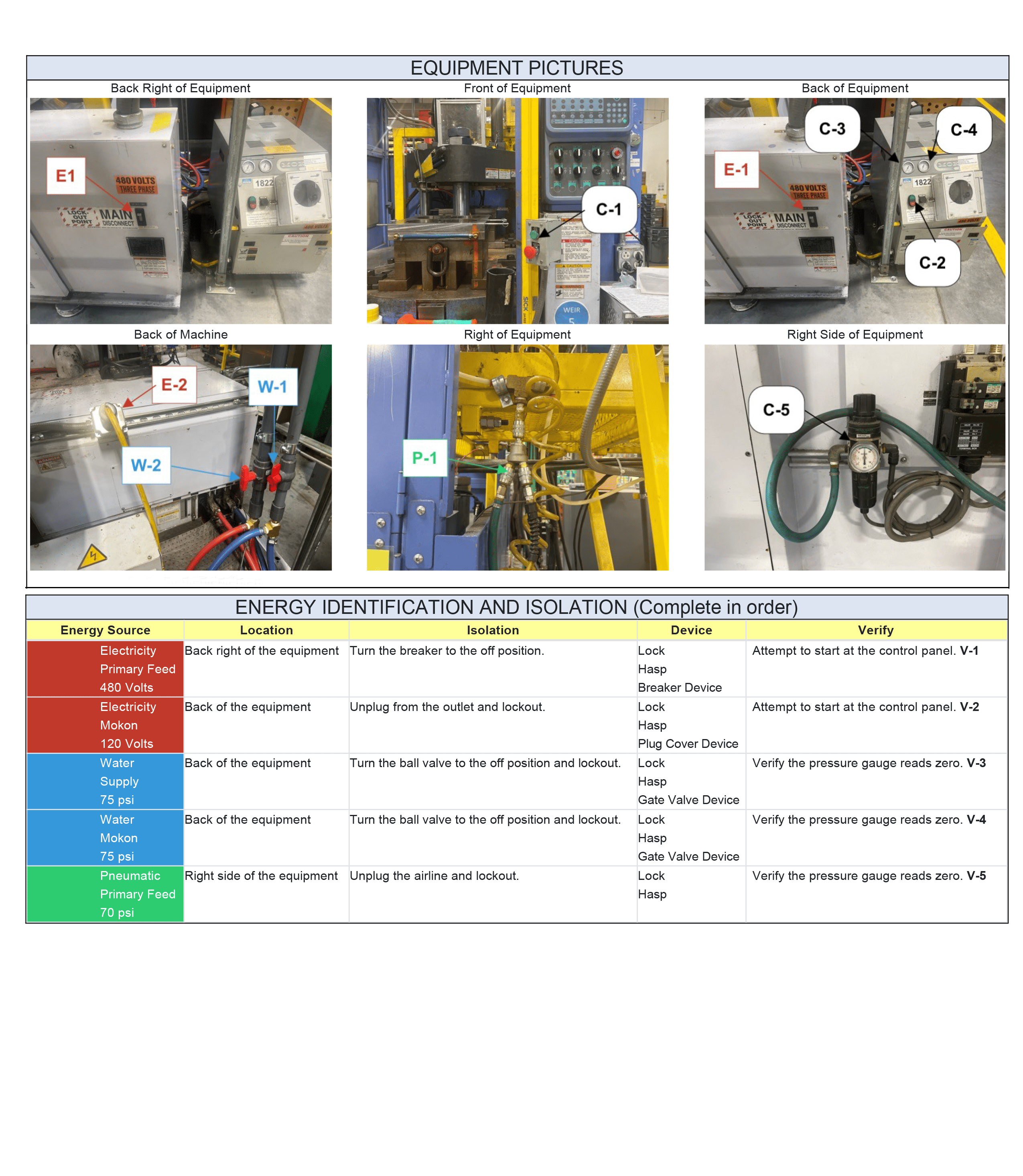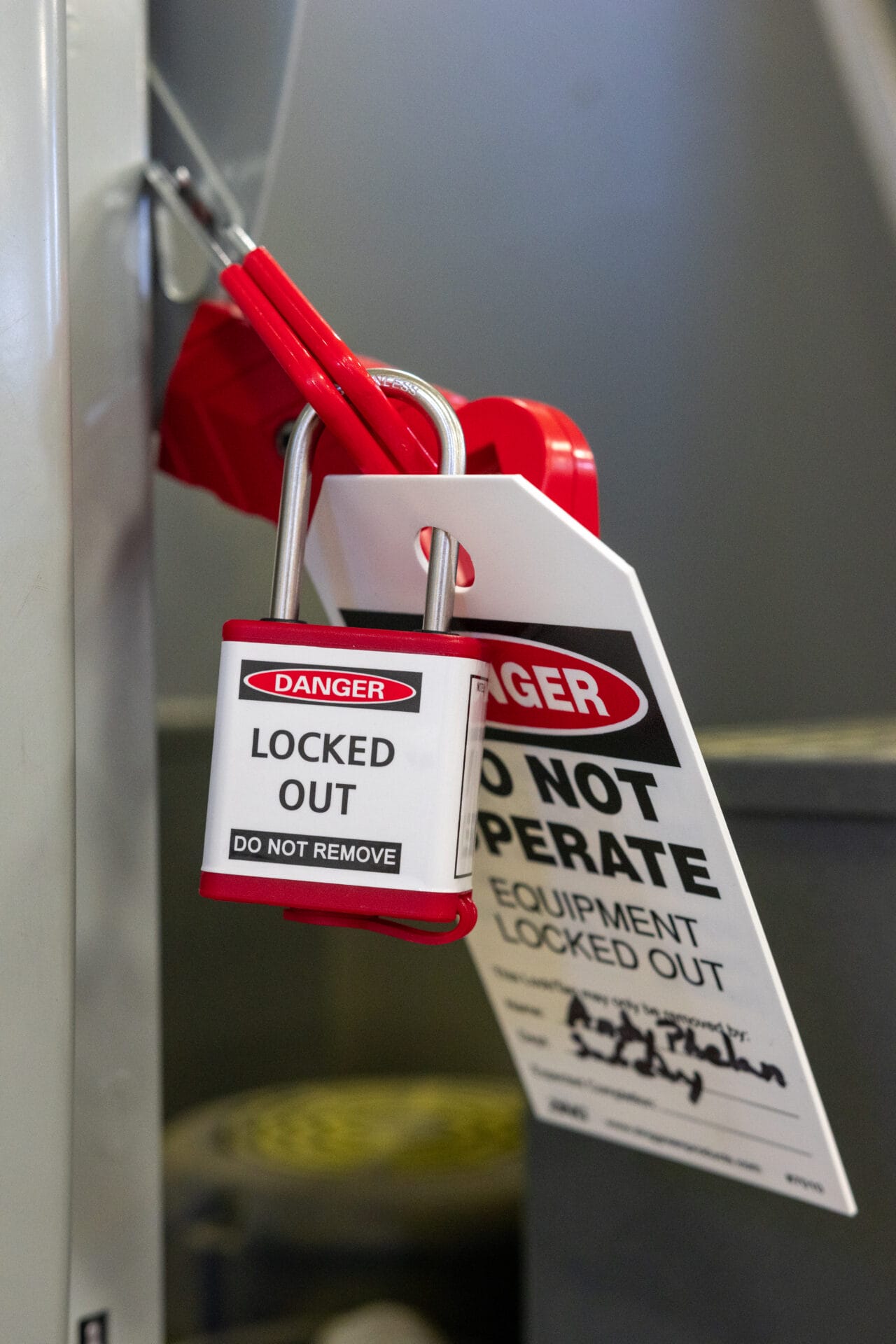You might have heard the term lockout tagout and wondered whether it is something you need to be concerned about. This article will help you understand what it is, whether it applies to you, and how to implement it.
What is Lockout Tagout?
Lockout tagout is a safety program used in various industries to ensure that machines are properly shut down during maintenance or servicing work. The purpose of lockout tagout is to control hazardous energy and prevent accidental startup of machinery or equipment, which could lead to serious injuries or fatalities.
A LOTO program usually includes documentation of the steps required to safely shut down a machine. This is called a lockout tagout (LOTO) procedure.
After the shutdown procedure is complete the lockout step is performed. Lockout is the physical act of placing a lock on an energy-isolating device, such as a disconnect switch or valve, to prevent the release of hazardous energy from the machine. The last step is tagout. Tagout is the placement of a tag on the locked device to indicate that it should not be operated. The tag provides information about who is responsible for the lockout and why it has been applied.
Why is Lockout Tagout Necessary?
Lockout Tagout is necessary for several important reasons related to workplace safety and the protection of employees.
First and foremost is the protection of workers. Lockout tagout procedures protect workers who are performing maintenance or servicing tasks by ensuring that the equipment is de-energized and cannot be started unintentionally. This helps prevent exposure to hazardous energy sources.
Accidental startup of a machine while it is being worked on can result in severe injuries or fatalities. Incidents such as these can physically harm employees, generate distrust/anxiety among workers, produce bad press, and result in high repair costs.
Another great reason to have a LOTO program is that OSHA requires it. Following the guidelines put in place by OSHA and/or any other Authority Having Jurisdiction ensures legal compliance and helps to avoid costly fines for non-compliance.
Finally, it is important to consider mitigation of risk and liability. Lockout tagout is an essential component of a comprehensive risk management strategy because it mitigates the risk associated with working on equipment or machinery with hazardous energy. This can help reduce an organization’s liability in the event of a workplace accident and protect against legal claims.
What are the OSHA Standards?
The Occupational Safety and Health Administration (OSHA) in the United States has specific regulations regarding lockout tagout procedures to ensure the safety of workers during maintenance or servicing of machinery and equipment. This standard is documented in OSHA 1910.147 – The Control of hazardous energy (lockout/tagout).
While it is essential to review the specific guidelines, here is a summary of the key aspects of OSHA’s lockout tagout regulations:
- Requirements:
- Employers are required to establish and implement a written energy control program.
- The program should include procedures for isolating energy sources and affixing appropriate lockout or tagout devices to prevent the release of hazardous energy.
- The program must also include employee training, periodic inspections, and provisions for the identification and correction of unsafe conditions.
- Authorized Employees: Only authorized employees are allowed to perform lockout or tagout procedures. These employees should be adequately trained in the recognition of hazardous energy sources and the methods of isolation and control.
- Lockout-Tagout Devices: Employers are required to provide lockout or tagout devices that are durable, standardized, and identifiable. Lockout devices should be substantial enough to prevent removal without the use of excessive force or tools.
- Documentation: Employers must document their energy control procedures, and employees involved in the LOTO process should understand and follow these written procedures.
- Training: Employers are responsible for providing training to employees involved in maintenance and servicing activities. This training should cover the recognition of hazardous energy sources, the methods and means necessary for energy isolation and control, and the purpose and use of energy control procedures.
- Periodic Inspection: Employers are required to conduct periodic inspections of the energy control procedures to ensure their effectiveness. The inspections are meant to identify and correct any deficiencies or deviations.
How Do I Know if I Need a Lockout Tagout Program?
If your company has equipment that could potentially cause and injury, and employees that service or maintain the equipment, you most likely need a lockout tagout program. That being said, determining your safety needs involves assessing the nature of the machinery and equipment used in your workplace and evaluating the potential risks associated with the unexpected release of hazardous energy during maintenance or servicing activities. Here are some key factors to consider:
- Use of Machinery and Equipment:
- If your workplace utilizes machinery or equipment that has energy sources (such as electrical, mechanical, hydraulic, pneumatic, chemical, or thermal energy) that could pose a hazard during maintenance or servicing, a LOTO program is likely necessary.
- Potential for Hazardous Energy Release:
- Assess the equipment to determine if there is a potential for the release of hazardous energy when machines are being serviced or maintained. This can include situations where equipment could start up unexpectedly, causing injury to workers.
- Regulatory Requirements:
- Check applicable occupational safety and health regulations in your jurisdiction. If your business is regulated by OSHA, you should be familiar with OSHA’s lockout tagout standard (29 CFR 1910.147) outlines requirements for controlling hazardous energy during maintenance activities.
- Workplace Incidents:
- If there have been previous incidents or near misses related to the unexpected startup of machinery during maintenance, this indicates a potential need for a LOTO program to enhance safety measures.
- Industry Standards:
- Some industries have specific standards or guidelines regarding the control of hazardous energy. Check if your industry or specific equipment manufacturers recommend or require the implementation of lockout tagout procedures.
- Complexity of Equipment:
- If your workplace uses complex machinery or equipment that requires multiple energy isolation points, a comprehensive safety program may be necessary to ensure proper control of all energy sources.
- Employee Exposure:
- Consider the level of exposure employees have to the equipment during maintenance. If employees are directly involved in servicing or maintaining machinery, the need for a lockout tagout program is likely higher.
- Potential for Serious Injury or Death:
- Assess the potential consequences of an uncontrolled release of hazardous energy. If there is a significant risk of serious injury or death, implementing a lockout tagout program is crucial for safeguarding employees.
If, after considering these factors, you determine that there is a risk of hazardous energy release during maintenance or servicing activities, it is advisable to establish a comprehensive lockout tagout program.
What Do I Need to Get Started With Lockout Tagout?
First, identify the platform you will use to manage your lockout tagout system. While it is possible to write up LOTO procedures manually and keep them in a binder or file cabinet, using lockout tagout software is more effective. This kind of software contains a template to complete for efficient building procedures. Really advanced LOTO software even offers a mobile procedure builder. A mobile lockout tagout procedure builder can generate a procedure in mere minutes by allowing the user to snap pictures, annotate the pictures, and add the isolation and verification steps. Lockout tagout software is also used for managing equipment inventory and status, and completing lockout procedures digitally. It offers reporting and analytics to the people overseeing the program.
Next, identify the person(s) who will document the LOTO procedures. Procedures should be written by safety professionals who have the expertise to assess workplace hazards and develop effective lockout tagout procedures. If one is not available within your company, consider hiring a consultant to provide training to company employees or to develop the procedures and program for you.
You will also need to purchase appropriate lockout tagout devices including locks, tags, and other hardware. According to OSHA, the devices must be durable, standardized, and identifiable. Each employee involved in the LOTO process should have their own locks.
What are the Ongoing Lockout Tagout Requirements?
Ongoing lockout tagout requirements involve maintaining and continually improving the effectiveness of your lockout tagout program to ensure the safety of workers during maintenance or servicing activities. Some key requirements to be aware of include:
Procedure Audits: Procedure audits are generally conducted on an annual basis. They include a review of the written lockout tagout procedure by an Authorized Employee who is knowledgeable about the equipment and the lockout tagout program. The audits offer an opportunity to document any changes to the lockout tagout procedure and help to ensure compliance and effectiveness.
Employee Training and Training Audits: It is important to provide training to employees that will be performing lockout tagout procedures. Training ensures that the employee understands and can demonstrate the ability to safely execute the procedure. Re-training, or employee training audits, keep employees up to date on any changes to the lockout tagout procedure and offer an opportunity to recertify the employee to perform the procedure.
Staying on top of ongoing requirements is very important. It is also very important to maintain effective communications with employees to ensure they are aware of ongoing maintenance activities and understand the importance of adhering to lockout tagout requirements.
Conclusion
Developing and maintaining an OSHA compliant lockout tagout program may seem like a daunting task, but there are effective tools available to get you started quickly and accurately. The right tools also help to ensure long-term and ongoing compliance. LOTO software such as Smart Safety Pro Lockout Tagout offer a single platform for efficient procedure creation, management of equipment, audits, and employee training, and digital lockout and return to service execution. A tool like this combined with skilled training when needed will ensure that your program protects your employees and property, manages your risk and liability, and keeps you compliant and free from costly fines.





